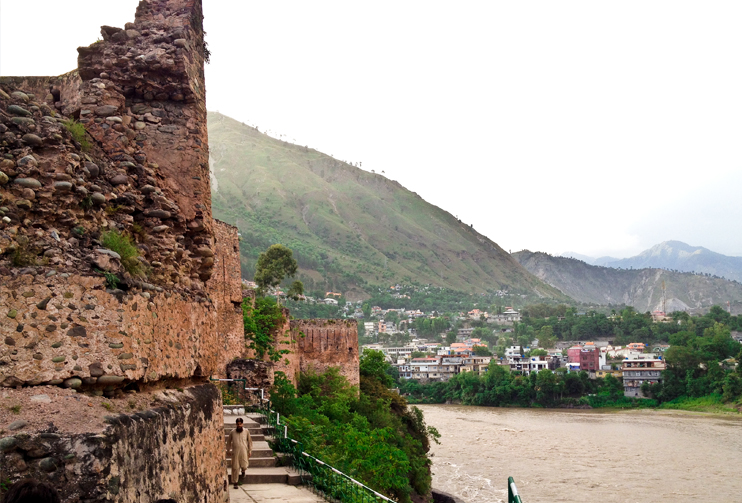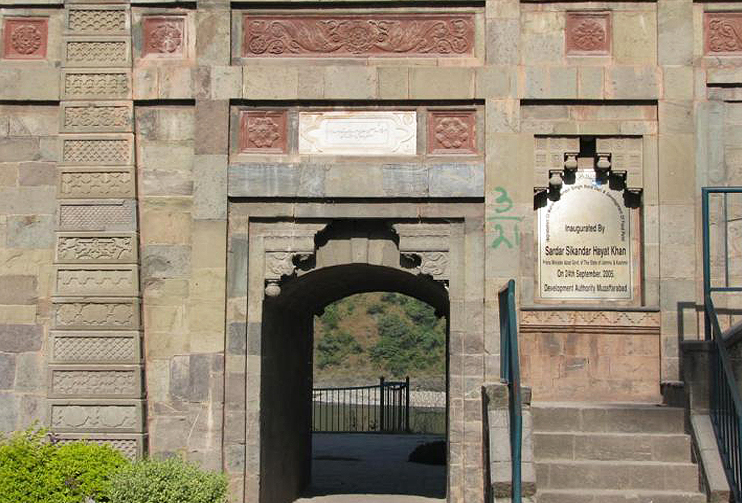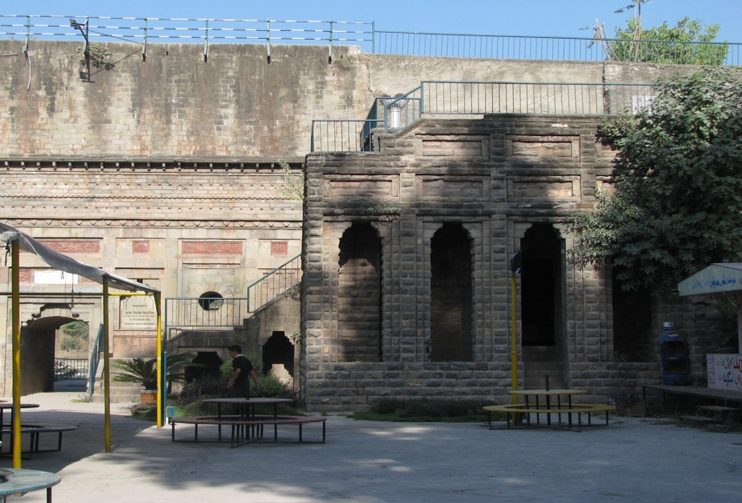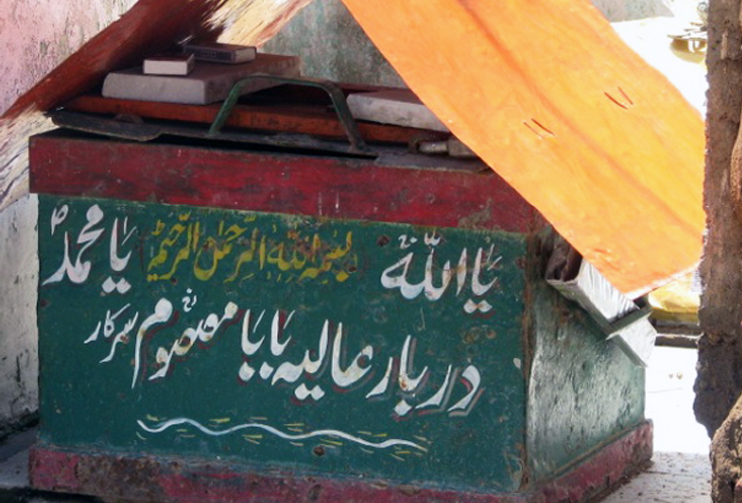Muzaffarabad

Show Map
Red Fort
In district Muzaffarabad Shah-Jahan requested Ai-Mardan to build the Saraa-e. This site is
situated on the west and south-west of the city. Nearly five thousand yards from the river on
the upper part of the area across the river Kishanganga (current Neelum).This fort is
constructed by Mughals above the river intersection used for military purpose as
well as prisoners. It is on the height 699m from sea level. This fort has entrance from the western. It
has strong hold watch towers at the each corner of the wall. The structure is similar to Pir-Panjal
routes Saraa-e. Currently it is called as black fort (Bates, 1873, p. 281).
This Sara-e was called as “Saraa-e Akbari”. This Saraa-e was built by the Governor of Kashmir named
as Ali Mardan Khan. The total area of the Saraa-e 38 kanals and 13 marlas. There is 6 bastions in
this Saraa-e and 2 are in left and right side of the entrance gate. Red bricks, stones and lime was
used in its construction. There were steps leading toward river Neelum. There was a stone slab in
front of waiting hall with name “Jalal-ud-Din Akbar Khalif-Ullah”.In 1630 Jhangir held a Festival
here. A slab was fixed there with sixth lines poetry , one of them is here below;
شاہ نور الدین جہاں گیر ابن اکبر بادشاہ
آن شہنشاہ کہ باشد رہنماۓ خاص و عام
Dr Ghulam Azhar Husain writes; this stone slab was removed in Dogra Period and was placed in
premises of Pir Alao-Din for sometime.After 1947 it was remained training centre for Army.
Now it is used under the ISI department (Tareekh e Kashmir , Syed Mehmood Azad).
Muzaffarabad
Red Fort



Baradhari



Baradhari
Ranbir Singh's Baradari: The Baradari of Ranbir Singh is situated on the bank of Jhelum River along with bridge. Baradari is attached with Domel Bridge on the both side of river. There is Baradari attached to this bridge. It is decorated with various geometrical and floral patterns. There are two inscriptions are present inside wall of the fort with Ranbir sing name as 1885 which provides the date of construction (Bates, 1873, p. 281). The site can approached from Chattar Housing Scheme, Garhi Pan and Old Secretariat. Domel is the junction point of Neelum and Jhelum rivers where the Ranbir Singh Baradhari is located. Thirty five steps are leading to the main Baradhari from the eastern side of the Qaid e Azam Bridge. At the top of the entrance the name Baradhari is “Ranbir Singh Bardhari” engraved on a little made marble stone flanked by floral pattern. positioned . The second part of the Baradhari is positioned on the left bank of the river Jhelum which is replica of the main Baradhari along with similar features (Book; Threat to the cultural Heritage of the Pakistan: TIAC Qaid e Azam University Islamabad 2016).
Gurdwara Chatti Badshahi
It is situated in police line Gojra district Muzaffarabad. Guru Hargoband G was born on 1595 in Amritsar, according to Sikhs belief He was the 6th guru of Sikhs. It is the last station of Guru Hargoband G in Kashmir. Due to Mughals threats he travelled to Kashmir. He came to Kashmir via Urhi, Hattian and Muzaffarabad had stayed at Naluchi Gojra. This Gurdwara was constructed as a memorial of Guru Hargoband G was called Gurdwara Chatti Badshahi. In this Gurdwara Besakhi and other festivals were celebrated here before partition. Before 1947 it was a splendid monument of Sikhs which was used for their religious and political possessions. After partition in 1947 it remained abandoned. In 1952 training school of Police was transferred in Muzaffarabad and the Gurdwara and its premises came in custody of Police department.
Muzaffarabad
Gurdwara Chatti Badshahi









